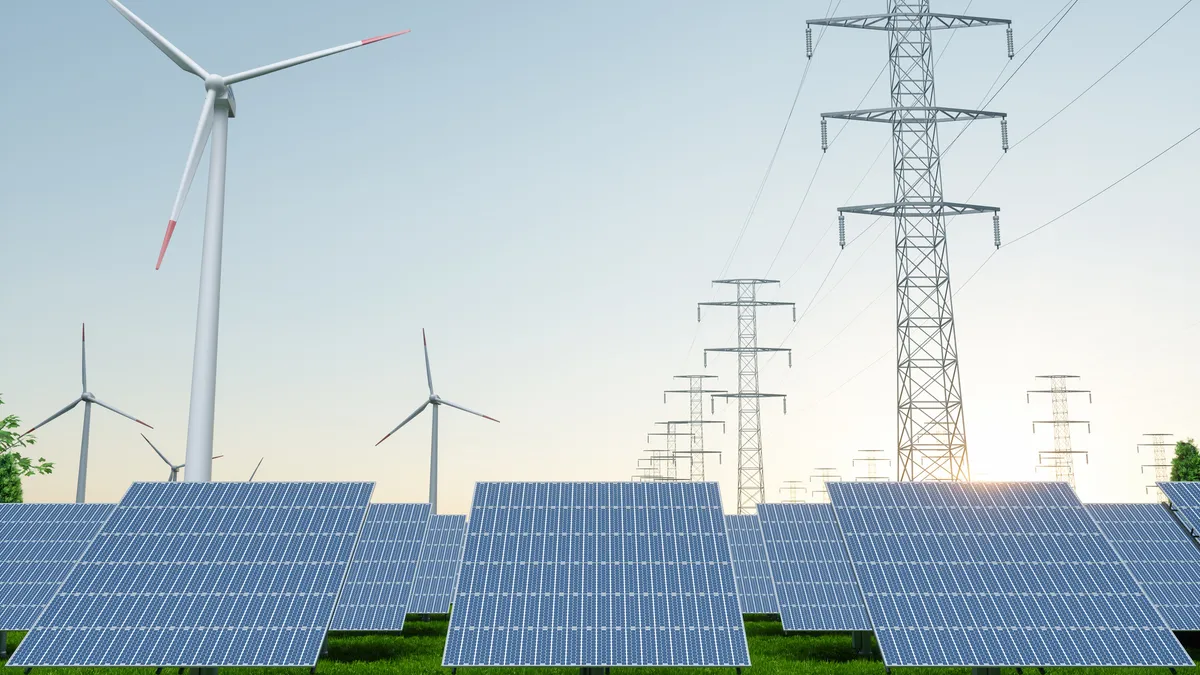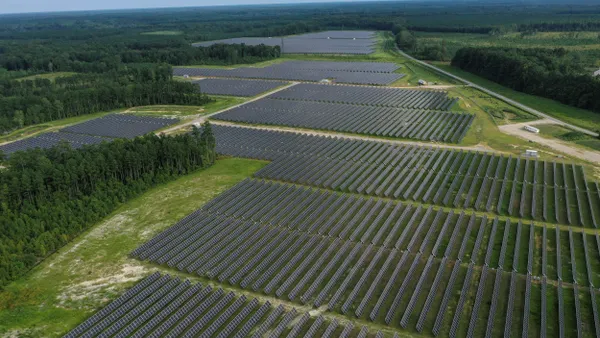Dive Brief:
-
Solar power purchase agreement prices stabilized over the past quarter, after several months of rising costs, according to data from the energy marketplace at LevelTen Energy.
-
The average cost for North American solar PPAs fell 1.4% during the first quarter of 2024, while wind PPA prices rose 2.4%, according to LevelTen Energy. Wind PPAs are up 20.3% year over year, while solar PPAs have increased 4.9% since early 2023.
-
LevelTen Energy does not expect solar PPA prices to continue declining this year. High interest rates have adversely impacted the market and the Federal Reserve's decision to postpone rate cuts this year will likely put upward pressure on PPA prices, said Samuel Mumford, an analyst at LevelTen Energy.
Dive Insight:
Despite the price stability of the past quarter, would-be renewable energy buyers could face a difficult market in the months to come, according to LevelTen Energy.
Developers likely built their early 2024 bids on the assumption that the Federal Reserve would cut interest rates sometime this year, Mumford said. But now that the Fed has signaled otherwise, he said, prices could resume their upward trend.
“Following years of volatility in global and domestic energy markets, 2024 has thus far provided some degree of respite for market participants,” Mumford said. “As PPA prices moderate but regulatory challenges and high demand loom on the horizon, the market may not grant PPA buyers with a better procurement window than right now for a very long time.”
LevelTen facilitated PPAs for a record-breaking 98 million megawatt hours of clean energy in 2023, Mumford said, which suggests that demand for clean energy continues to increase. But the number of available clean energy projects may not keep pace with demand in the face of ongoing inflation, he said.
These dynamics have hit wind projects the hardest, according to LevelTen Energy. Increased permitting challenges, land scarcity, and rising prices and financing costs have limited the number of viable wind projects and rendered others financially non-viable, triggering a bidding war for the handful of wind projects with capacity to sell.
Solar has fared somewhat better, but the large number of projects backlogged in interconnection queues around the country may be creating an illusion of abundance. Interconnection delays have become so severe that PPAs with an interconnection agreement in-hand have become a “fundamentally” different product than early-stage projects without an interconnection agreement, Mumford said.
“With aging infrastructure and major queue delays, most projects will probably be delayed and many will not reach their target CODs or reach COD at all,” Mumford said. “So, despite the appearance of a backlog of projects, we could actually be in a situation in the future where there is a lot more PPA demand than supply.”














